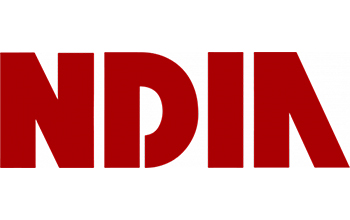3 Budget-Busting Earned Value Management System Mistakes To Avoid

Crucial Tips for the Proposal and Startup Phases
During the proposal and startup phases of an Earned Value Management System (EVMS)—all the way through the Integrated Baseline Review (IBR)—it is critical to focus on the basics. This means we should pour most of our energy into meeting the authorized scope, schedule, and cost requirements (targets) during these initial project phases.
We’ve seen (and overcome) plenty of mistakes during these crucial phases, but here we’ll focus on just three:
1. Failing to Invite Pessimists to the Party
When it comes to planning and estimating assumptions, we keep a shrewd, pessimistic eye out for risk. Here are some tips to stay realistic during this process:
Scope and Schedule: Use Past Projects as a Benchmark
Regarding scope and schedule, it’s essential to look at past projects as a benchmark. If a chunk of work took 1,000 hours before, it will probably take 1,000 hours again. Do not suppose a chunk of work can be accomplished faster without tangible justification.
Tip: Decide on a complexity factor when comparing two projects–and then use that as your default. Think twice before deviating from that complexity.
Cost Planning: Again, the Past and Past Mistakes Are Our Friends
Looking to the past is equally critical for cost planning. Which resources and costs did the last project require? How does using in-house versus outsourced labor affect the cost? Will it cost more or less this time? If we get things done more quickly will we save costs? Which factors allow us to say that? Where did our cost planning go wrong last time? Working to answer these types of questions will orient your thinking toward achieving quality cost planning.
2. Oops. Errors and Omissions
We’re all human, but let’s see how to avoid common errors and omissions in the EVM process:
Scope: Own Every SOW Paragraph
Managing a project’s work scope starts with the Statement of Work (SOW). The most critical step here is to carefully account for the scope of every paragraph in the SOW—including attachments, appendices, tables, and exhibits.
Let’s stress this part because it’s important: We are going to check a box to show that we have included the scope for each and every paragraph in the SOW. This way, we can assign the name of a specific Control Account Manager (CAM) or team member to own each paragraph’s scope, schedule, and cost.
Schedule: Socks Before Shoes
Schedule omissions often happen when we fail to list all of the key tasks required for a specific block of work. Always take a step back and account for the major phases, reviews, events, and deliverables for every SOW section. We like to call these “Control Milestones” and, like the SOW, assign an owner to each one. This ensures there is enough time and resources to achieve each big-ticket item.
Schedule errors will affect how we sequence the work. When we’re dealing with hundreds or even thousands of tasks, it’s easy to overlook something simple and accidentally schedule the shoes to go on before the socks. Even the smallest linking errors can delay the project for months. This is where robust scheduling tools like Microsoft Project and Oracle Primavera P6 can help. Still, we need an actual person to double-check that everything’s right for every major chunk of work in the schedule. Again, every task and milestone must have an owner.
Cost: What About Travel?
Big cost errors can result from assigning the wrong resource types. This might involve costing (pricing) in-house labor versus outsourced labor, estimating lower vs higher skilled labor categories, or omitting key Elements of Cost (EOCs). The right resource codes matter. Here are some questions that help us avoid these common cost errors:
-
- Do our estimates include labor, material, and other direct costs (ODCs)?
- Do we need any outside contractors or suppliers to do the work? Does this increase or decrease costs?
- Have we accounted for all of the hardware, including prototypes, full-up systems, sub-systems, sub-assemblies, and spares?
- What about travel?
- Do we need to purchase project-specific software licenses or warranties?
- Are there potential packaging and shipping costs?
- Do we need to purchase or fabricate tooling or Special Test Equipment (STE)?
- Do we need project-specific test facilities?
- Did we choose the correct resource codes for the above?
- Have we time-phased all of the above to account for changing direct and overhead rates?
Taking the time to answer these questions helps us identify and resolve easy-to-miss errors.
3. Failing to ‘Envelope the Work’ Properly
In Earned Value Management, we use thresholds or ‘envelopes’ for cost and schedule variances. These are preset targets that help us use the 80/20 rule to focus on the work that is creeping from green to yellow to red performance. Thresholds are there for a reason, but many projects don’t leverage them appropriately. Here are some tips for using thresholds, targets, or ‘envelopes’:
Schedule: Set EVM Variance Thresholds Early and Reset As Needed
Many teams set up variance thresholds early on or use customer-directed thresholds. They then leave them the same for the project’s entire life. Instead, revisit variance thresholds every 6 months and see if they truly make key costs and schedule drivers to trip those thresholds. If not, set tighter thresholds. If many of your variances trip thresholds that aren’t truly significant, then loosen the thresholds a bit. Again, it’s important to review past projects. If we want to deviate from prior thresholds for similarly sized and valued projects, we must make sure to justify it. Lastly, consider tighter internal thresholds vs customer-directed thresholds to give the project team time to mitigate variances. Lastly, be careful not to over-burden the project team with too many variances that are not truly significant.
Bonus Tip: Don’t Wait 6 Months to Prepare for the IBR
The Integrated Baseline Review (IBR) typically comes within the project’s first six months. The key mistake we see is treating the IBR like a ‘Big Bang’ event. Instead, get ready for the IBR as early as possible. Read more about Project Startup and IBRs.
Conclusion
In this article, you’ve learned how to avoid three of the most dangerous budget-busting mistakes during the earliest stages of the EVM process—especially as they relate to scope, schedule, and cost. Fortunately, even an EVM beginner can follow the tips above to avoid getting in trouble and pass the IBR with flying colors.
Before we go, we’d like to give you something else we use during the proposal and startup phases of every project we take on. It’s our checklist for keeping Earned Value Management Systems on track and on budget. Download the Project Startup / IBR checklist here. If you have any questions, please feel free to get in touch with us at any time.
Subscribe to our Newsletter:






